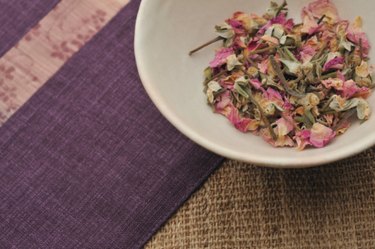
Although flowers may seem nothing more than an aesthetically pleasing addition to the world, these beautiful buds are often more than they appear. As you explore the world of flowers, consider some less-common flower topics, and explore the uses of flowers that are not related to their beauty and aesthetic appeal.
Flowers in Food
Video of the Day
Flowers can be as pleasing to the palate as they are to the eyes. While some flowers are not so tasty and others are entirely inedible, some of these beautiful buds are edible and, in fact, can add flavor to cooking. Explore the world of edible flowers, looking at flower derivatives, such as rose oil, as well as flowers that some eat whole, such as squash blossoms. Explore the ways in which these stunning flowers can be used in the crafting of foods as well as the potential health benefits associated with eating foods that contain flower parts.
Video of the Day
Medicinal Flower Uses
In ancient times, and even to some extent in the contemporary world, people turn to flowers for their medicinal powers. Sunflowers, for example, have been known to ease menstrual pain and aid in the soothing of sore throats. Likewise, chrysanthemums have been said to be effective in curing colds and reducing fevers. To increase your ability to put flowers to use for more than just aesthetic purposes, explore the medicinal uses of flowers, creating a catalog of what ailments flowers can cure as well as how flowers can be used for these purposes.
Flower Meanings
While nearly all flowers are beautiful, some have more than just a pleasing appearance. Historically, many flowers have been symbolically linked to meanings. For example, yellow roses have long been a symbol of friendship. Gather information on the meanings associated with common flowers as well as where these meanings originated. Explore ways in which a bouquet crafted while taking these meanings into consideration can be more meaningful and appropriate than a randomly gathered group of flowers.
Aesthetics of Floral Arrangement
Though aesthetics may seem quite simple, in truth, there is science behind the process of crafting something beautiful. Scientists have, for example, found that things that are symmetric are generally seen as more attractive than asymmetrical objects. Research the science of beauty, and apply your findings to the art of floral arrangement, gathering information on how arrangers produce flower clusters that are more appealing by considering scientifically sound principles of beauty.